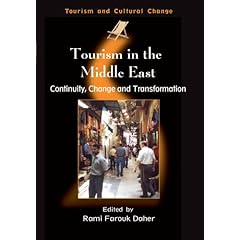 Just like one would a frozen TV dinner, New Zealand biologists are defrosting a boxed Colossal squid, captured in 2007 in the Antarctic. The last moments of the 33 foot long squid were spent having a repast of Patagonian toothfish hundreds of miles off the coast. A consternated crew of a fishing trawler hauled the colossal squid out of the deep marveling at its sheer size and the movable hooks on the end of each tentacle. As big as this species of squid is, the top of the marine life food chain, sperm whales, consider the rare creatures tasty uncooked calamari. Sightings of squids of this magnitude, giant or colossal, occur rarely and usually in very deep waters.
Just like one would a frozen TV dinner, New Zealand biologists are defrosting a boxed Colossal squid, captured in 2007 in the Antarctic. The last moments of the 33 foot long squid were spent having a repast of Patagonian toothfish hundreds of miles off the coast. A consternated crew of a fishing trawler hauled the colossal squid out of the deep marveling at its sheer size and the movable hooks on the end of each tentacle. As big as this species of squid is, the top of the marine life food chain, sperm whales, consider the rare creatures tasty uncooked calamari. Sightings of squids of this magnitude, giant or colossal, occur rarely and usually in very deep waters.Since then it has been kept frozen in a box, still wrapped in the fishing net in which it was caught. Defrosting the squid without parts of its body beginning to rot is a difficult operation.
"With this specimen, we have to remove the container around it, manoeuvre the frozen squid into the defrosting tank, then carefully remove the net as it defrosts - a very delicate procedure," said Dr Carol Diebel, from the Museum of New Zealand Te Papa in Wellington.
 Known formally as Mesonychoteuthis hamiltoni, this half-ton rare squid's estimated time until pungently ripe is 36 hours. They are trying to retard decomposition as the squid thaws. After removal from the walkin freezer, let the dissecting of small parts begin. Eager scientists at the Museum of New Zealand Te papa Tongarewa or as the Māori call it, Te Papa are going do anatomical experiments, take apart and then reassemble the cephalopod's carcass for embalming, then preservation in formalin. In a truly interactive way, a web cam will record the process, live, for the curious and far flung scientists to observe the process. A formal initial finding from an international team of squid aficionados will be delivered in a scientific lecture on Thursday, 1 May.
Known formally as Mesonychoteuthis hamiltoni, this half-ton rare squid's estimated time until pungently ripe is 36 hours. They are trying to retard decomposition as the squid thaws. After removal from the walkin freezer, let the dissecting of small parts begin. Eager scientists at the Museum of New Zealand Te papa Tongarewa or as the Māori call it, Te Papa are going do anatomical experiments, take apart and then reassemble the cephalopod's carcass for embalming, then preservation in formalin. In a truly interactive way, a web cam will record the process, live, for the curious and far flung scientists to observe the process. A formal initial finding from an international team of squid aficionados will be delivered in a scientific lecture on Thursday, 1 May.Colossal male squids are thought to be extremely well endowed with two foot penises. Unwieldy and startling considering the squids thrive in deep cold water. Since 1925, there are only about 5 that have been brought back to the lab. Scientists are waiting to see if they can determine sex quickly after the squid is taken out of the 7000 liters of saltwater. What is amazing is the squids have the capacity to grow even bigger than this specimen. The Museum director hopes to be able to display the squid after the defrosting and autopsy.
The first thing the scientists plan to measure is the "beak" it
uses to cut up its food. The largest so far recovered is 49mm long, and it
is unclear whether this will beat the record. After that they will be
determining the sex, which they believe is male.

Twenty Thousand Leagues Under the Sea drew Jules Vernes to find inspiration from a swashbuckling encounter of a French ship against a creature of the deep to form the character, Captain Nemo, and the rest is classic literature or a great film.





























































